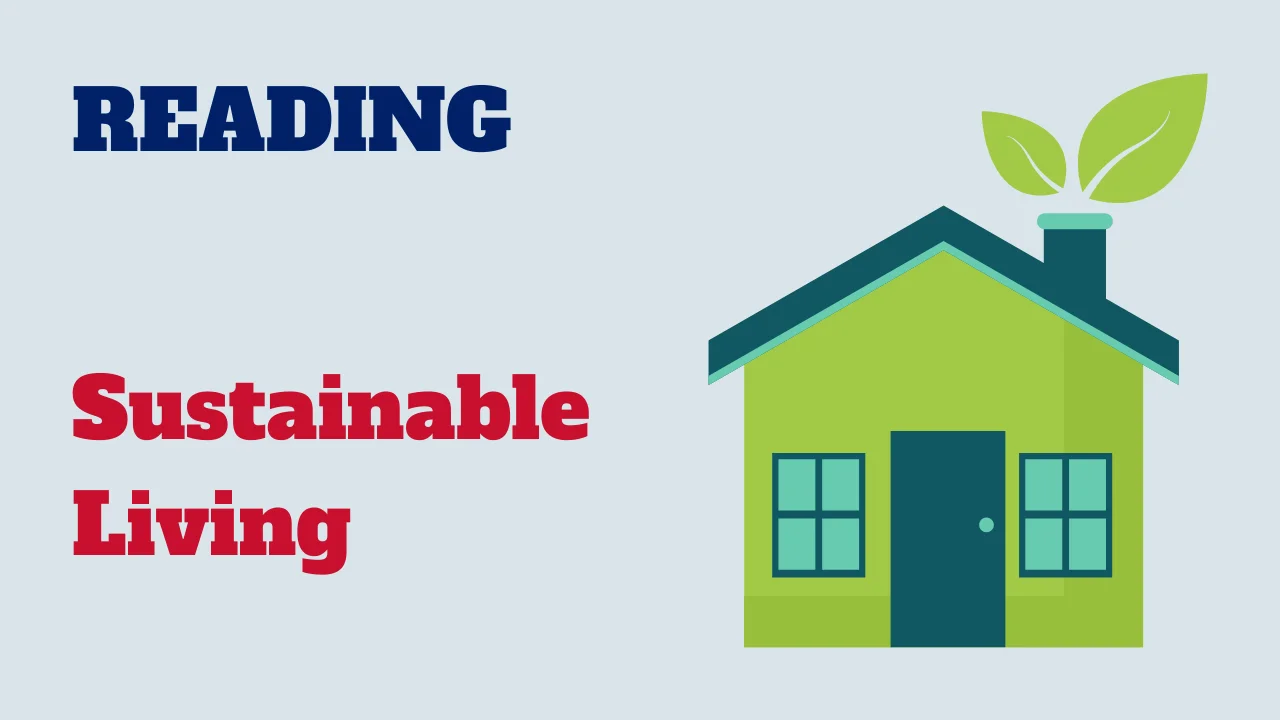Welcome to an exploration of sustainable living and its implications for individuals, governments, and businesses. In this reading activity, we’ll delve into the concept of sustainable living, its importance in achieving global sustainability goals, and the role of governments and businesses in supporting and measuring change.

From understanding the impact of lifestyle choices to fostering positive behavior change, let’s delve into the dynamics of sustainable living.
Text: Sustainable living
Sustainable living is a lifestyle choice that prioritizes minimizing environmental impact, conserving resources, and promoting social equity to ensure a healthy and thriving planet for current and future generations. It involves making conscious decisions to reduce consumption, minimize waste, and adopt practices that support ecological balance and social well-being.
At the heart of sustainable living is the principle of environmental stewardship. This entails reducing carbon emissions, preserving biodiversity, and protecting natural habitats by choosing renewable energy sources, minimizing energy and water consumption, and adopting eco-friendly transportation options. Sustainable living also involves reducing waste generation and promoting recycling, composting, and upcycling to minimize the burden on landfills and natural ecosystems.
Another key aspect of sustainable living is responsible consumption and production. This involves making informed choices about the products we buy, opting for items that are ethically sourced, produced using environmentally friendly materials, and designed for longevity and repairability. Supporting local businesses, farmers’ markets, and fair trade initiatives also promotes sustainable economic development and reduces the carbon footprint associated with transportation and global supply chains.
Sustainable living extends beyond environmental considerations to encompass social equity and justice. It involves advocating for human rights, fair labor practices, and equitable access to resources and opportunities for all people, regardless of race, gender, or socioeconomic status. Building strong communities, fostering cultural diversity, and promoting social cohesion are essential elements of sustainable living that contribute to a more equitable and inclusive society.
Individuals, communities, businesses, and governments all play a role in advancing sustainable living practices. By adopting sustainable lifestyles, businesses can reduce their environmental footprint, enhance their reputation, and attract environmentally conscious consumers. Governments can enact policies and regulations that incentivize sustainable practices, invest in renewable energy infrastructure, and promote sustainable development initiatives.
Ultimately, sustainable living is about recognizing our interconnectedness with the natural world and each other and taking collective action to create a more resilient, equitable, and sustainable future for all. Embracing sustainable living practices not only benefits the planet but also enriches our lives by fostering a deeper connection to nature, promoting social cohesion, and enhancing overall well-being.
Comprehension questions
Congratulations on completing the exploration of sustainable living and its implications for individuals, governments, and businesses. By understanding the interconnectedness between lifestyle choices and environmental impacts, we can collectively work towards a more sustainable future. Remember, through informed decision-making, supportive policies, and collaborative efforts, we can foster positive behavior change and create a world where sustainability is the default option. Let’s continue to strive for a more sustainable way of living for the well-being of our planet and future generations.



